Are There Any NEW Book Ideas Out There? • by Natascha Biebow
Arethere really any NEW book ideas out there . . .? When youhave a book idea, do you go online and search if anyone else has done italready?
For example, say you wanted to write a book on the topic of TREES. Here are just seven different ways 'in' to the topic that you might find:
 Trees to Spot by Kirsteen Robson and Sam Smith
Trees to Spot by Kirsteen Robson and Sam Smith The Tree Lady: The True Story of How One Tree-Loving Woman
The Tree Lady: The True Story of How One Tree-Loving Woman Changed a City Forever by H. Joseph Hopkins and Jill McElmurry
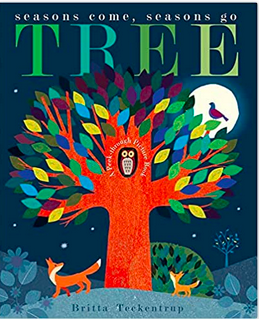 Tree by Britta Teckentrup
Tree by Britta Teckentrup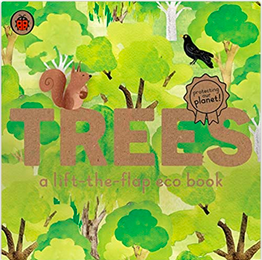 Trees: A Lift-the-Flap Eco Book illus by Carmen Saldana
Trees: A Lift-the-Flap Eco Book illus by Carmen Saldana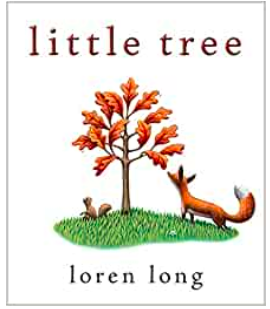 Little Tree by Loren Long
Little Tree by Loren Long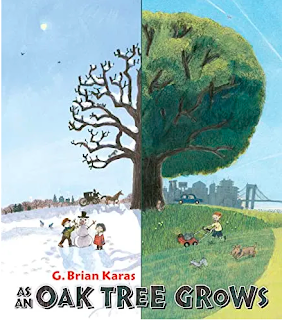 As an Oak Tree Grows by G Brian Karas
As an Oak Tree Grows by G Brian Karas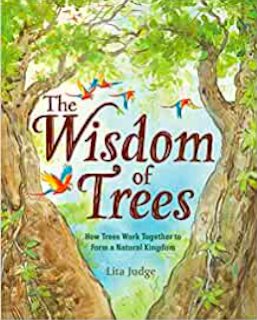 The Wisdom of Trees by Lita Judge
The Wisdom of Trees by Lita JudgeSo, arguably, most ofthe time, the answer is yes – in some shape or form - someone will have already written a book on 'your' topic. Why?
People are oftenasking the same questions – we’re curious by nature.
Everythingreminds us of something . . .
It canbe dispiriting, sometimes, to find yourself almost halted by this kind of obstacle before you’ve evenreally started.
But . . .
Here’s aglimmer of hope: most ideas HAVE already been done, but they haven’t alreadybeen done by YOU.
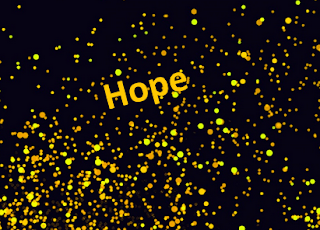
So, howcan you figure out your fresh, new take on an idea, your uniquely YOU story?
Writingcoaches and industry professionals will often say:
“Writefrom the heart.”
“Writewhat you know.”
“Sharewhat you’re driven to share.”
Yes, ifyou do this, your writing will come from you and your experience.
But thekey here is to find a connection with readers that feels fresh and new. How?
You have to find a way to make your idearesonate with readers in a uniquely YOU way.
How?
You have to make them say a-ha! or ahhhh!!!or aw! or WOW!
Tounderstand this, we have to delve into where any ‘new’ ideas come from.
Humansare driven to be creative and innovate. It gives us a boost. But . . .
“There is no such thing as a new idea. It is impossible. We simply take alot of old ideas and put them into a sort of mental kaleidoscope. We give thema turn and they make new and curious combinations. We keep on turning andmaking new combinations indefinitely; but they are the same old pieces of coloredglass that have been in use through all the ages.” ― Mark Twain, Mark Twain's Own Autobiography:The Chapters from the North American Review
 Our ideas are in all kinds of combinations, in a 'mental kaleidescope'
Our ideas are in all kinds of combinations, in a 'mental kaleidescope' So how do we make ‘new and curiouscombinations’ that are amazing and feelfresh and new? How do we create something that feels AUTHENTIC?
GENERATING NEW IDEAS:
To create new ideas, we often startwith what’s come before, then question the defaults in order to innovate. In anarticle for the Smithsonian Magazine,this is summed up perfectly:
“Across the spectrum of human activities, prior art propels thecreative process . . .
Before 1908, building a newcar was laborious. Each vehicle was custom built, with different partsassembled in different places and then painstakingly brought together. ButHenry Ford came up with a critical innovation: he streamlined the entireprocess, putting the manufacture and assembly under one roof. Wood, ore, andcoal were loaded in at one end of the factory, and Model Ts were driven out theother. His assembly line changed the way the cars were built . . . Ford later said, “I invented nothing new. I simply assembledinto a car the discoveries of other men behind whom were centuries ofwork.”
So,authors must Start with the BUILDING BLOCKS of our world and our lives and seekout the new. We must be curious. This is why we must look around us – reallyLOOK.
We must do RESEARCH:listen to people around us,read lots of books, watch movies and documentaries, view art,search for problems that need solving in new ways, get involved in pursuitsthat are unrelated to writing for creative inspiration. Spend time with ouryoung audiences.
Wemust ASK QUESTIONS:our writer ears must be attuned and open to possibilities.We must look for adventure and explore.
Then, we must CHANGE THINGS UP, pushthe BOUNDARIES of our everyday and knowledge, and look for NEW ANGLES onexisting solutions and ideas beyond what we already know.
We must make creativity a habit!
BE PROLIFEROUS
In his book Originals: How Non-Conformists Move the World, Adam Grant suggestscreatives should generate a lot of ideas to find the original.
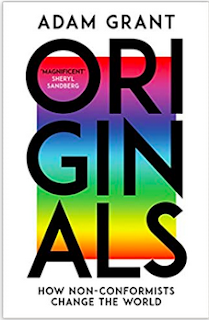 Originals: How Non-Conformists
Originals: How Non-Conformists Changed the World by Adam Grant
Surprisingly, he shares that William Shakespeare wrote his famous playsMacBeth, Othello and King Lear at the same time as quite a few ‘un-exceptional’plays. Similarly, Mozart and Beethoven composed more than 600 pieces in theirlifetimes, and only a handful were masterpieces. Picasso painted thousands ofpaintings and Edison registered over 1000 patents, but each are remembered andrevered for a handful of achievements.
Grant also says that most people make the mistake of generating only a handfulof ideas and ‘then obsess about refining them to perfection.’ Sound familiar?
So, to create new, innovative ideas, we must push ourselves to generate more ofthem and think big.
FINDING THE EXTRAORDINARY IDEA
So, now you have a pile of ideas . .. but here’s another problem – how can you figure out which ideas are the onesto pursue? Grant says that as creatives we are too close to our work toevaluate it successfully, which is why we are either often too positive aboutsomething (we love what we’ve just made!), or unable to see its faults. Thesolution? To ask fellow creators because they are “open to seeing the potentialin unusual possibilities” and they often don’t have a stake in the outcome ofour ideas in the way we do.
So, find a reliable critique grouppartner or, if you’re lucky enough to have one, listen to your editor, agent orart director – they know what they’re talking about!
REMEMBER! IT TAKES TIME to percolate
to have the thought in the back ofour minds long enough to come up with creative and unique idea.
Let's take another evergreen picture book topic (New babies in the family!) and look at some examplesof how different creators have approached it and innovated tocreate a ‘new’ book idea that felt fresh and new and connected with readers:
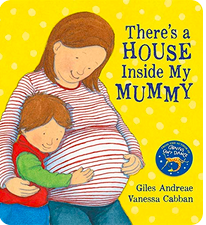 There's a House Inside My Mummy
There's a House Inside My Mummy by Giles Andrae and Vanessa Caban
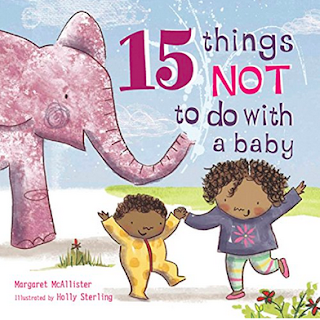 15 Things NOT to Do with a Baby
15 Things NOT to Do with a Baby by Margaret McAllister and Holly Sherling
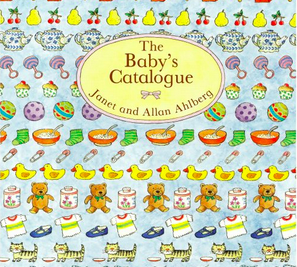 The Baby's Catalogue by Janet and Allan Ahlberg
The Baby's Catalogue by Janet and Allan Ahlberg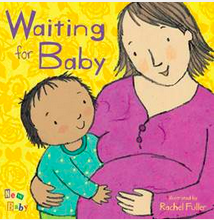 Waiting for Baby by Rachel Fuller
Waiting for Baby by Rachel Fuller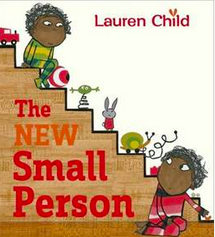 The NEW Small Person by Lauren Child
The NEW Small Person by Lauren Child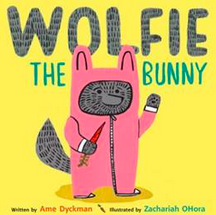 Wolfie the Bunny by Ame Dyckman and Zachariah OHora
Wolfie the Bunny by Ame Dyckman and Zachariah OHora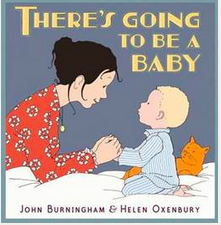 There's Going To Be a Baby by John Burningham and Helen Oxenbury
There's Going To Be a Baby by John Burningham and Helen Oxenbury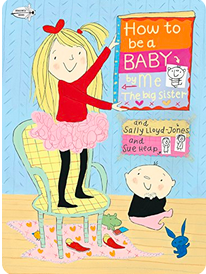 How to Be a Baby by Me The Big Sister by Sally Lloyd-Jones and Sue Heap
How to Be a Baby by Me The Big Sister by Sally Lloyd-Jones and Sue Heap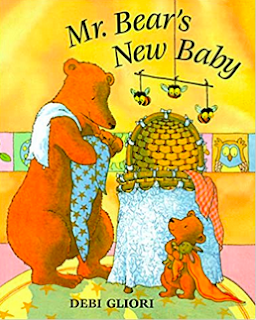 Mr Bear's New Baby by Debi Gliori
Mr Bear's New Baby by Debi Gliori Mummy Laid and Egg by Babette Cole
Mummy Laid and Egg by Babette Cole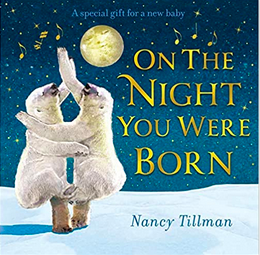 On the Night You Were Born by Nancy Tillman
On the Night You Were Born by Nancy Tillman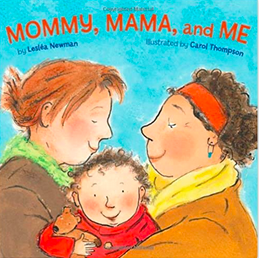 Mommy, Mama and Me by Lesléa Newman and Carol Thompson
Mommy, Mama and Me by Lesléa Newman and Carol Thompson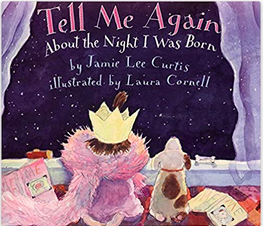 Tell Me Again About the Night I Was Born by Jamie Lee Curtis and Laura Cornell
Tell Me Again About the Night I Was Born by Jamie Lee Curtis and Laura Cornell
So many ways 'in'! You can change up the target age group, fiction vs. non-fiction, flip the point of view, turn the voice on its head, innovate the structure and so much more!
Even if you don’t come up with abrand new idea, by adding your unique take on it, you could add a newperspective or spin that might feel new and connect with young readers. AndTHAT is valuable!
@font-face {font-family:"MS 明朝"; mso-font-charset:78; mso-generic-font-family:auto; mso-font-pitch:variable; mso-font-signature:-536870145 1791491579 18 0 131231 0;}@font-face {font-family:"Cambria Math"; panose-1:2 4 5 3 5 4 6 3 2 4; mso-font-charset:0; mso-generic-font-family:auto; mso-font-pitch:variable; mso-font-signature:-536870145 1107305727 0 0 415 0;}@font-face {font-family:"Trebuchet MS"; panose-1:2 11 6 3 2 2 2 2 2 4; mso-font-charset:0; mso-generic-font-family:auto; mso-font-pitch:variable; mso-font-signature:647 0 0 0 159 0;}p.MsoNormal, li.MsoNormal, div.MsoNormal {mso-style-unhide:no; mso-style-qformat:yes; mso-style-parent:""; margin:0cm; margin-bottom:.0001pt; mso-pagination:widow-orphan; font-size:12.0pt; font-family:"Times New Roman"; mso-fareast-font-family:"MS 明朝"; mso-fareast-theme-font:minor-fareast; mso-ansi-language:EN-US;}a:link, span.MsoHyperlink {mso-style-priority:99; color:blue; text-decoration:underline; text-underline:single;}a:visited, span.MsoHyperlinkFollowed {mso-style-noshow:yes; mso-style-priority:99; color:purple; mso-themecolor:followedhyperlink; text-decoration:underline; text-underline:single;}.MsoChpDefault {mso-style-type:export-only; mso-default-props:yes; font-size:10.0pt; mso-ansi-font-size:10.0pt; mso-bidi-font-size:10.0pt; mso-fareast-font-family:"MS 明朝"; mso-fareast-theme-font:minor-fareast; mso-fareast-language:JA;}div.WordSection1 {page:WordSection1;}
_________________________________________________________________
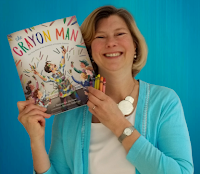 Natascha Biebow, MBE, Author, Editor and Mentor
Natascha Biebow, MBE, Author, Editor and MentorNatascha is the author of the award-winning The Crayon Man: The True Story of the Invention of Crayola Crayons, illustrated by Steven Salerno, winner of the Irma Black Award for Excellence in Children's Books, and selected as a best STEM Book 2020. Editor of numerous prize-winning books, she runs Blue Elephant Storyshaping, an editing, coaching and mentoring service aimed at empowering writers and illustrators to fine-tune their work pre-submission, and is the Editorial Director for Five Quills. Find out about her new picture book webinar courses! She is Co-Regional Advisor (Co-Chair) of SCBWI British Isles. Find her at www.nataschabiebow.com



